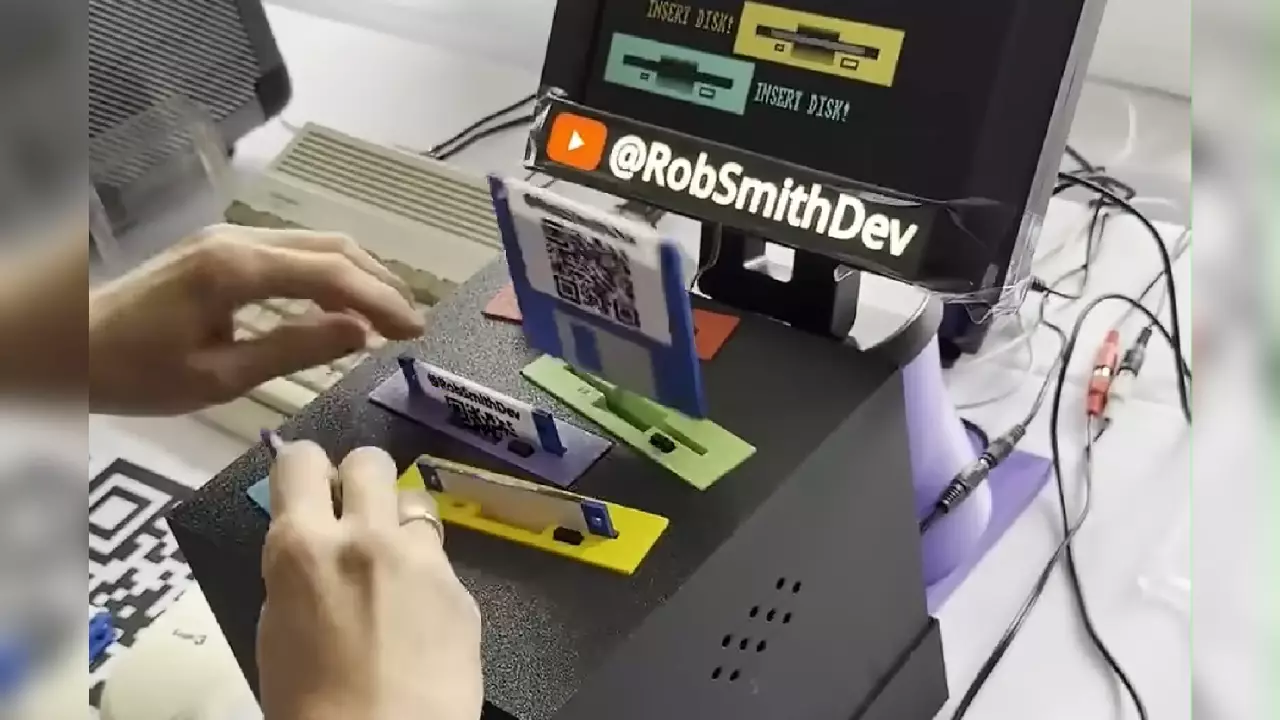In an era dominated by cutting-edge graphics and immersive virtual reality, the allure of the old school remains a potent force. While I personally have never touched a floppy disk, I feel an inexplicable nostalgia for the bygone era of floppy drives and primitive storage. This sentiment fuels the creative spirit of hobbyists who transform obsolete technology into playful art. One particularly compelling example is the creation of DiskFight, a game that marries the charm of retro hardware with contemporary engineering ingenuity. The project exemplifies how nostalgia can serve as a catalyst for innovation, offering a hands-on experience that both respects and revitalizes the technological past.
Designing a Modern Arcade Experience with Old Hardware
What sets DiskFight apart is its playful reinterpretation of a classic “whack-a-mole” style game, but with a distinctive twist: floppy disks serve as the “moles.” The creator, known as Rob Smith Dev, breathed new life into the vintage Amiga machine by integrating custom-built linear actuators underneath five floppy disk slots. These mechanisms gently push disks in and out, simulating a responsive, tactile game environment. The intent isn’t to create a violent or frantic game but to evoke a gentle, almost meditative interaction—like delicately repositioning projectiles rather than smashing them. This subtle shift in gameplay philosophy aligns well with a nostalgic appreciation for the past, affording players a sense of craftsmanship rather than chaos.
Marrying Hardware and Software: An Artistic Endeavor
The construction of DiskFight is meticulously detailed, reflecting a blend of technical skill and artistic vision. The 3D-printed casing illustrates the DIY spirit, assembled with screws, glue, and an unyielding determination to revive a piece of history. On the software side, Smith employed AMOS, a programming language designed specifically for the Amiga platform, to code the game’s logic. This choice underscores the love for retro computing, as AMOS is remembered for its simplicity and nostalgic charm. Musically, the game features a custom track—”Disk Menace”—created by Hoffman, who specializes in retro-themed electronic music, often performing DJ sets on vintage devices. The track’s progression, from slow build to intense crescendo, cleverly mirrors the escalating chaos of the gameplay, showcasing a thoughtful integration of audio-visual elements.
The Power of Nostalgia as Creative Fuel
What makes projects like DiskFight genuinely captivating is their ability to evoke a sense of nostalgia while pushing creative boundaries. This creation isn’t simply a throwback; it’s a testament to the enduring relevance of vintage tech in inspiring new forms of entertainment. The game’s visual chaos, with floppy disks flying out of ports at frantic speeds, taps into the adrenaline of classic arcade games but with a uniquely retro flair. The 30-second gameplay segment captured on YouTube reveals a surprisingly frenetic experience—challenging players to manage the disks quickly before chaos ensues. Even on easy mode, the game’s playful chaos demonstrates that old technology can still deliver fresh entertainment when reimagined with passion and ingenuity.
Legacy and Future Implications
DiskFight embodies a broader trend of the retro-tech revival, where enthusiasts aren’t just nostalgic but are actively re-engineering the past into meaningful art. This approach fosters a deeper appreciation for how far technology has come, while simultaneously celebrating the craftsmanship of early computing. Moreover, such projects serve as educational tools, bridging the gap between modern programming and vintage hardware. They challenge assumptions about technological progress being linear, emphasizing that innovation often springs from reinterpreting the old through new lenses.
Ultimately, the charm of DiskFight lies in its audacious blend of simplicity, creativity, and reverence for the past. It stands as a bold reminder that even in a world obsessed with the newest devices, there is immense value in revisiting and reimagining the technology that laid the foundation for our digital future. The project isn’t just a game; it’s a tribute—a testament to the enduring spirit of innovation that can turn forgotten tech into something unexpected, engaging, and deeply personal.

